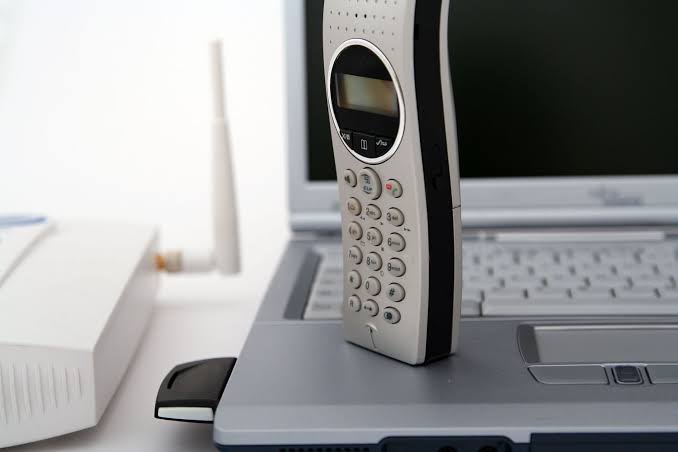All web communication sessions are built upon the session initiation protocol (SIP), a popular internet telephony standard. It creates sessions, controls signaling, and cuts off the connection when sessions are over. You must understand SIP to understand how network services like VoIP trunking and internet-based phone systems operate. So, this article includes a tutorial and an overview of how the SIP protocol works in VoIP, including its port.
What Is SIP Protocol?
SIP is a signaling protocol for initiating, maintaining, and terminating real-time sessions including voice, video, and messaging applications. The protocol defines the messages sent between endpoints and the rules for processing them. SIP is designed to be independent of the underlying transport protocol and can be used with UDP, TCP, or SCTP.
SIP is the most popular signaling protocol for VoIP and other IP-based applications. You can use SIP to set up and tear down voice and video calls, and other applications such as instant messaging and presence. However, SIP is a text-based protocol, similar to HTTP or SMTP. SIP messages are typically encoded in ASCII, but can also be encoded in binary.
How SIP Protocol Works
Do you want to know how the SIP Protocol works? The SIP protocol tutorial, as well as its port in VoIp, are shown here. SIP works with the initial connection between two interlocutors: the outgoing caller and the call recipient. Additionally, it’s not for audio calls alone. You can start video sessions with SIP and instant messaging “sessions,” which transmit information from one internet user to another.
The SIP protocol is a text-based protocol that uses tags to identify different parts of a SIP message. A SIP message consists of a start-line, one or more header fields, and an empty line. The start-line indicates the message type, such as an INVITE or a BYE. The header fields describe the message, such as the sender, recipient, and content. The empty line indicates the end of the message.
SIP messages go over the network using the Transmission Control Protocol (TCP) or the User Datagram Protocol (UDP). The messages are typically over UDP because it is a faster protocol. When a SIP message goes over UDP, it encapsulates in a UDP datagram. The UDP datagram then goes over the network to the destination.
Furthermore, SIP is a simple and flexible protocol you can use for various applications. It is commonly for VoIP, but it can also suit video conferencing, instant messaging, and other applications.
What Are The 4 Types Of SIP?
Session Initiation Protocol (SIP) is a signaling protocol for initiating, maintaining, and terminating real-time sessions that include voice, video, and messaging applications.
SIP is based on request/response transactions, in which each transaction consists of a request sent by a client to a server, and a response sent by the server back to the client. However, below are four types of SIP requests or messages:
#1. INVITE
The INVITE request initiates a session. It contains information about the session, such as the media types and the addresses the media will use. The INVITE request also contains a Session Description Protocol (SDP) offer, which describes the media that the sender is willing to exchange.
The user agent client sends the INVITE request to the user agent server. The user agent server then sends a response indicating whether the session has been established. So, if the session has been established, the user agent server sends an ACK request to the user agent client. And if the session has not been established, the user agent server sends a BYE request to the user agent client.
#2. ACK
ACK is a four-way handshake protocol used to confirm the data delivery across an unreliable network. It is a positive acknowledgment protocol. For instance, if a packet is lost, the ACK protocol will retransmit the data until it is received by the destination.
Meanwhile, the ACK protocol is a reliable way to ensure data goes across an unreliable network. It is a simple protocol that uses a sequence number to keep data tracked.
#3. BYE
SIP is the most common signaling protocol for voice and video calls over the internet. It is an application layer protocol for communication between two or more endpoints. SIP is a text-based protocol that uses various message types to establish, maintain, and terminate a session.
BYE is one of the message types used in SIP to terminate a session. When one endpoint wants to end a session, it sends a BYE message to the other endpoint (or endpoints), indicating that it wants to end the session. The other endpoint (or endpoints) then sends a BYE message back, and the session ends.
#4. CANCEL
CANCEL is a SIP request message to terminate a pending request. A CANCEL request cancels all pending requests that have the same Call-ID. In addition, the user sends the request including the reason for the cancellation.
SIP Protocol Port
The SIP Protocol Port is a communication protocol used for VoIP calls. It allows for real-time communication between two devices. The SIP port uses many different ports for different types of communication. The most common port used for SIP is port 5060. This port is for making and receiving VoIP calls.
Other ports for SIP include port 5061, which is for secure SIP communication, and port 5062, for SIP calls that use the Transport Layer Security protocol. Additionally, SIP clients and servers can also use other ports for communication, such as the Transmission Control Protocol (TCP) or the User Datagram Protocol (UDP).
Importance Tips To Know About SIP Protocol
SIP is the most popular protocol for VoIP and is a key technology in the 3GPP Long-Term Evolution (LTE) standard. You can use it to set up and tear down voice and video calls, as well as to exchange messages.
If you are working with VoIP or another type of real-time communication, it is crucial to know the basics of SIP. Here are some tips:
- SIP is a text-based protocol, so it is easy to read and debug.
- The messages are typically encoded in ASCII.
- It is extensible, so you can add new features without breaking compatibility.
- SIP is a stateful protocol, meaning that each SIP session has a state that the SIP server must track.
- The SIP INVITE initiates the sessions, while the SIP BYE terminates the sessions. However, you can send the messages over UDP, TCP, or SCTP.
- Additionally, you can use SIP for both voice and video calls.
What Is A SIP Protocol Tutorial?
SIP Protocol Tutorial provides an overview of the Session Initiation Protocol, which is a signaling protocol used for initiating and managing communication sessions such as Voice over IP telephony calls. The tutorial covers the basics of the SIp protocol and how it works and more advanced topics such as call routing and security.
However, SIP is relatively easy to understand and debug. It is also flexible and can have several applications beyond VoIP. For example, you can use SIP for video conferencing, instant messaging, and even gaming.
How Does SIP Protocol Work In Voip?
The SIP Protocol is the most important in VoIP. It is responsible for setting up, maintaining, and terminating VoIP calls. SIP is a text-based protocol that uses various headers to encode the different parts of a VoIP call.
Furthermore, SIP is responsible for establishing a connection between two VoIP devices. It does this by sending a request to the other device, which then responds with an acknowledgment. Once you start a connection, you can use SIP to maintain the connection and terminate the call. You can also use it to transfer calls from one device to another or to add additional devices to a call.
What Is A SIP Meeting?
A SIP meeting is a meeting that is over the web using a VoIP service. Most businesses usually use this type of meeting because it is a cost-effective way to communicate with employees worldwide. Hence, there are numerous VoIP services you can use for a SIP meeting, but the most popular ones are Skype and Google Hangouts.
What Does SIP Stand For In HR?
In human resources, SIP stands for “Share Incentive Plan”.
What Does SIP Mean In HR?
In HR, Share Incentive Plan (SIP) is an employee incentive that allows employees to receive shares of the company they work for. You can use this plan to attract and retain employees and motivate and engage them in the company’s success.
What Is SIP In Management?
In management, SIP stands for “Systematic Investment Plan.” It is a financial strategy in which an investor regularly contributes a fixed sum of money into security or securities. The strategy is often save for retirement, but you can also use it for other long-term financial goals.
The systematic investment plan has several advantages. One is that it forces the investor to be cautious about saving. Another is that it allows the investor to dollar cost average, which can help to reduce the risk of investing. Finally, systematic investing can help to reduce the effects of market timing.
Nevertheless, SIPs are a popular investment choice for many investors, especially those new to investing. While there is no guaranteed return on investment, the average return on SIPs over the long term is around 12-15%.
What Is SIP In Interview?
SIP stands for Structured Interview Protocol. It is a set of guidelines for conducting interviews with job candidates. The protocol is to help ensure all candidates are treated fairly and that the interviews are well-conducted.
The SIP guidelines cover all aspects of the interview process, from pre-interview planning to post-interview follow-up. The protocol includes a list of standard questions for all candidates, as well as suggestions for how to score the answers. In addition, the SIP guides how to conduct behavioral interviews to assess a candidate’s past behavior to predict future performance.
What Is SIP Employee?
A SIP employee is someone a company hires to work on a specific project or set of projects. This type of employee is usually when a company needs to complete a task quickly or needs someone with a specific skill set. SIP employees typically have a set contract with the company they are working for and are not to be part of the company’s regular workforce.
Conclusion
In conclusion, the SIP protocol is a critical part of VoIP and helps to ensure clear communication between two parties. You can use SIP in private and public networks because it is a key protocol in mobile networks. However, it is important to know SiP protocol basics; how it works, and what programs to use to take advantage of its many benefits.






